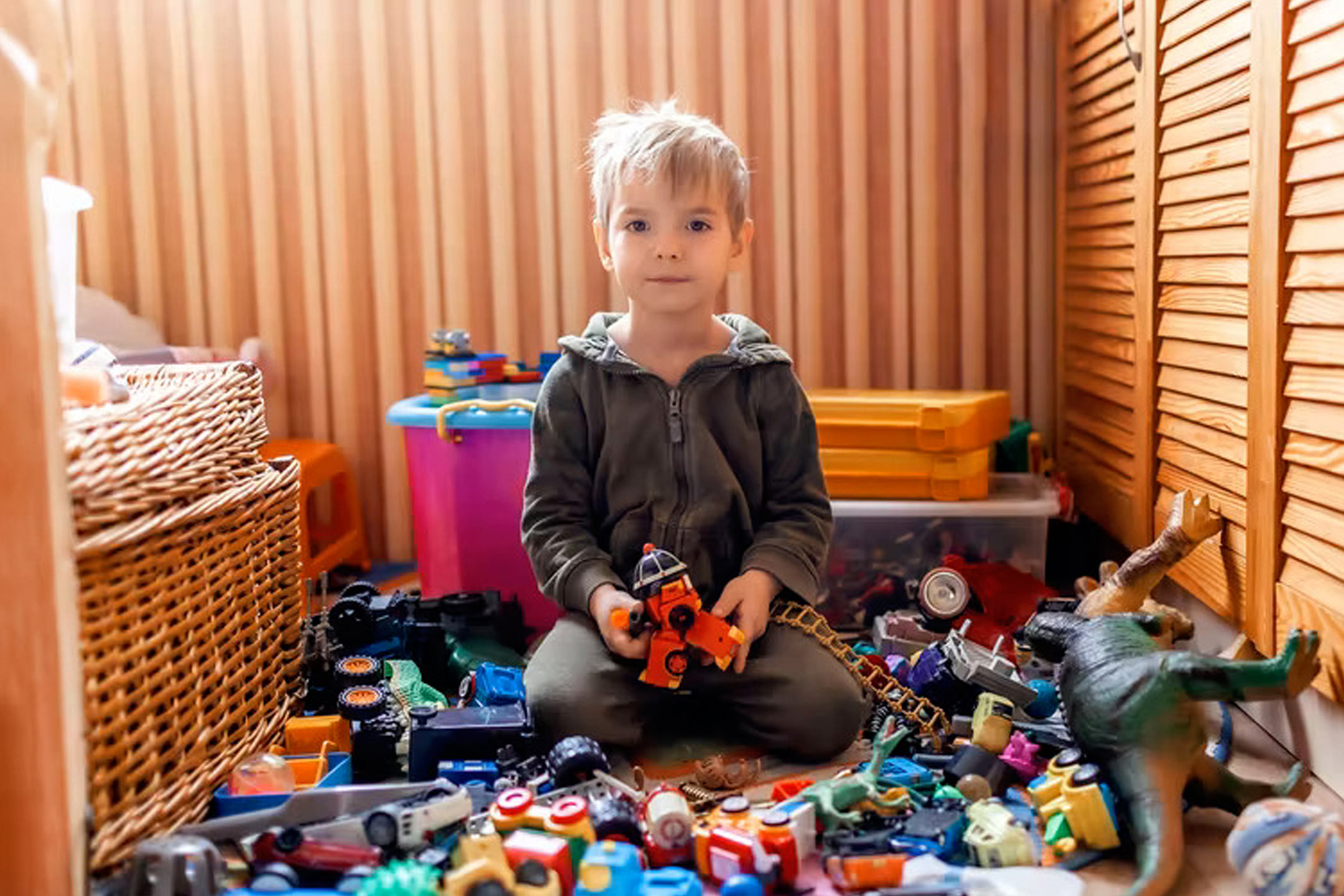
26 Jun How to help kids let go of old toys and stuff they no longer need
How often do you hear ‘No, I still want that!’, write Shane Rogersand Natalie Gately
In any household with children there is an inevitable accumulation of possessions. Birthdays, Christmas, the celebration events like sporting victories and random impulse buys bring in a stream of toys, clothes and other stuff.
But getting rid of these possessions is another story. While some children can be convinced to send their old toys to the op shop, or give clothes that are too small to younger friends to wear, other kids really struggle.
Here’s why it’s so difficult and how parents and guardians can help.

Why help your kids learn to let go of possessions?
The obvious reason is to avoid clutter. For people who value their home being tidy, research shows clutter can negatively impact their mood and wellbeing. However, the definition of what constitutes a cluttered space varies dramatically across people.
In extreme cases, children can develop a hoarding disorder if they consistently struggle letting go of items, and having to do so causes them a lot of distress.
The psychological act of letting go of possessions has similarities with getting over other things, such as thwarted expectations (such as an event being cancelled), or getting over a relationship breakdown. Cultivating an ability to let go of possessions in childhood may have positive implications well beyond simply avoiding clutter.

Shutterstock
When and why do kids become attached to possessions?
Attachment to objects begins in a child’s first year of life. Infants can become distressed when blankets and teddy bears are removed. Researchers view this early attachment behaviour as the objects acting as a comforting parental substitute in between parental contact.
As children get older, through early childhood into early teens, a sense of comfort remains as one of the primary reasons behind attachment to possessions. However, the type of comfort can become more complex as the child ages.
Over time, children may come to treat a toy as a unique individual. In one clever study, children were presented with a “duplicating machine” based on a simple conjuring trick. They could either choose to have a copy of their toy, or have their original toy returned. Children were more likely to request their original toy be returned instead of the new copy, indicating a level of attachment to the original toy.
Some toys take on a kind of “friend” status. Interacting with toys in this way is believed to have benefits for psychological and social development. It’s easy to imagine how parting with something viewed in such a manner might be a challenge.
Possessions can also act as memory cues. That old, now ill-fitting and faded t-shirt they are reluctant to throw out might be serving as a reminder of how special and loved they felt at their birthday party.
Just like adults, children can fall into the “I might need this later” trap. For example, a child that used to love colouring but has since moved onto different hobbies might still be reluctant to throw out the old crayons just in case.
So what can you do?
First, try to model the behaviour you would like your child to perform. If you have trouble letting go of your own possessions, they will be less likely to see the need to throw away their stuff.
Next, talk with the child about their underlying motivations behind their resistance to let go – and help them deal with their mental blocks.
- For a possession that feels like a friend, you might encourage them to concentrate on their other toys that are also special. Help them understand relationships can end, and that’s OK. There are new relationships they can have. Take a gradual approach and encourage them to donate their toy when they are ready. This can help them feel they are not disposing of their toy altogether. The toy continues to exist, just with someone else.
- For a possession that is helping them remember good times with sentimental value, remind them those good times will still have happened. There are other ways to keep memories alive, such as photos, or reminiscing with loved ones.
- For “I might need this later”, one strategy is to take away the concern that underpins the resistance. Tell them “you can get another one if need be in the future”. Chances are it won’t happen.
There are going to be other reasons and motivations beyond those above, so take a targeted approach. Do this by communicating with your child to understand their point of view. Then tailor your strategy to best alleviate the specific concerns they have.

Shutterstock
Try to avoid only lamenting about the mess, which might backfire if the child starts harbouring feelings of guilt and resentment about letting go of their possessions.
Instead, finding out the underlying reasons for their reluctance will allow you to work with them to deal with those thoughts and emotions.![]()
Shane Rogers, Lecturer in Psychology, Edith Cowan University and Natalie Gately, Senior Lecturer and Researcher, Edith Cowan University
This article is republished from The Conversation under a Creative Commons license. Read the original article.

